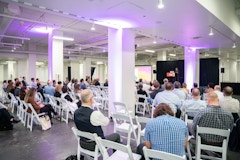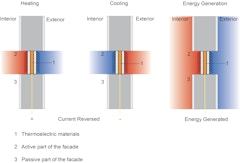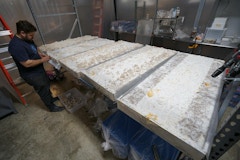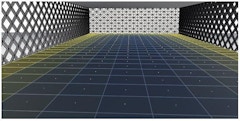
488 results
-

-

-

Reconfigurable Terracotta Facades
- Article by Jin Young Song · Dan Vrana · Jonathan Hopp · Shawn Murrey · Jiatao Wu · Jongmin Shim
This study, completed by an interdisciplinary team from the University of Buffalo and Alfred University explores a thermal mass application using terracotta blocks that can be reconfigured for different seasons.
-

Renewing Historic Facades
- Paper by Christine Reynolds, PE · Hans Thummel, AIA, LEED AP BD+C
As the first phase of a $4 billion dollar, 180-acre, 60 building government preservation project in Washington DC, this case study reviews the
-

Behind the Facade: FTI Voices of Diversity, Equity and Inclusion
- Article by William Green
Like many businesses and institutions, we at FTI have been wrestling with challenges of diversity, equity, and inclusion (DEI), what it means to us, how to realize these important aspirations in the Institute.
-

Passive House Facade Design and Construction
- Paper by Louis Koehl, AIA, CPHD
Buildings account for over 40% of global emissions (GlobalABC, 2018). Growing populations and higher standards of living are increasing pressure on
-

Reconfigurable Terracotta Facade
- Paper by Jin Young Song · Dan Vrana · Jonathan Hopp · Shawn Murrey · Jiatao Wu · Jongmin Shim
The traditional building facade as a permanent construction does not actively respond to the differing needs from varying weather conditions.
-
Artwork Becomes Facadework: A Collaboration with Olafur Eliasson
- Paper by Stephen Katz
What is the difference between artwork and facadework? How can artwork be integrated into building façades? What are the possibilities when a façade
-

Performance-based Facade Framework
- Paper by Mahsa Minaei · Ajla Aksamija
Buildings have a considerable impact on the environment, and it is crucial to consider environmental and energy performance in building design.
-

Novel Active Facade Systems and Their Energy Performance in Commercial Buildings
- Paper by Ajla Aksamija · Mahsa Farid Mohajer · Zlatan Aksamija
This article presents results of a research study that focuses on understanding energy performance of novel facade systems that integrate
-
Growing Myceliated Facades
- Paper by Thibaut Houette, M. Arch. · Brian Foresi · Christopher Maurer, AIA, NCARB · Dr. Petra Gruber
Today's sustainability in architecture takes into consideration the complete life cycle of buildings and their components, from resource harvesting
-

Origami-Inspired Facade Design
- Paper by Joshua Schultz, Ph.D, P.E., LEED AP, ENV SP, Neil Katz, AIA,
To paraphrase Robert le Ricolias, the art of the structure is where to put the folds. Using that inspiration, fundamental concepts from origami,… -

Multi Layer Facades
- Paper by Robert Moisy
The history of high performance facades and glazing has been a tale of attempting to manage the conflicting requirements of, on one hand inviting
-

Deep green skins: Façade assembly design for adaptive capacity, durability, and disassembly
- Article by Mic Patterson PhD
The façade system is a potent potential lever for bringing transformative change to buildings and urban habitat in the pursuit of carbon reduction and net zero carbon goals. Nothing in architecture combines attributes of appearance and performance as does the building façade.
-
The Vertical Campus Facade
- Paper by Mayine Yu, AIA · Cooper Schilling, AIA, LEED AP BD+C · Jessica Young, RA
Case study of the recently opened John A. Paulson Center for New York University in Manhattan reviews design solutions of façade depth and scale to
-

High-Performance Building Facades
- Event by University of Massachusetts Amherst
For architects, designers, engineers, manufacturers, consultants, and owners' representatives interested in methods for designing high-performance facades.
-
Novel Techniques for Facade Optimization
- Paper by Viktoria Henriksson
Complex freeform architectural enclosures are becoming increasingly popular and easy to model and design with the help of modern computational tools.
-
Algorithmic Patterns for Facade Design
- Paper by Inês Caetano · António Leitão
Recently, building envelopes have been exhibiting complex shapes and patterns, a trend supported by current digital technologies. Likewise, the
-

Modern Heritage and Facade Improvements
- Paper by Uta Pottgiesser · Angel Ayón
Approximately 80% of our total building stock is from the 20th century. During the last decades, along with an increasing appreciation of modern
-

Mixed Reality in Facade Education
- Paper by Phillip Anzalone AIA, Professor Amber Bartosh, RA LEED AP BD+C, Professor
Developments in performative computational analysis, mass customization, and complex form manipulation revolutionized building envelope design…


